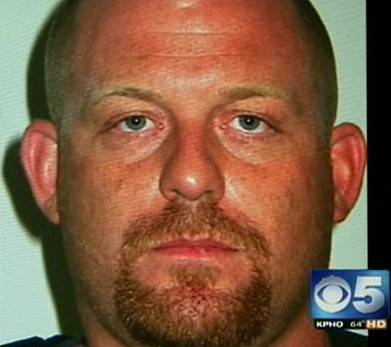
Officer James Peters is well known in Scottsdale, Arizona for having shot and killed six people in the course of only ten years on the force.
Between 2002 and 2012, Officer Peters was constantly in the news for shooting someone new, each time the shootings being ruled justified. But how could so many cops go their whole careers without shooting anyone, and yet this cop couldn’t seem to avoid it, time and time again?
That question remains unanswered.
But rather than viewing this trigger-happy ex-cop as a potential liability, police departments have now employed him to teach officers how and when to shoot people.
You read that right.
The Arizona blog Down and Drought says that Peters is currently employed as the “Regional Director of International Business Development and Law Enforcement SME/Trainer” for VirTra Systems.
VirTra Systems manufactures virtual-reality equipment that is used by over 200 law enforcement agencies around the world, for the purposes of teaching officers when to shoot and when not to.
Peters retired on disability five months after the last shooting he was involved in. VirTra hired him less than a month after that, at least if his LinkedIn profile is to be believed.
Gawker’s Andy Cush notes that “Peters was never found criminally at fault for a shooting, but in 2012, Scottsdale paid a $4.25 million settlement to the family of John Loxas, who Peters shot and killed while Loxas was carrying his nine-month-old grandson and had his back turned.”
Why did Peters open fire? He thought the man’s cell phone was a gun. Somehow, he was never criminally prosecuted for this killing.
“VirTra’s flagship product,” Cush adds, “the V-300, resembles a big and expensive human-centric version of Big Buck Hunter.“
How does it work? Cush explains that “Officers stand in the center of five video screens and are placed in a simulation of a potentially dangerous situation. If they fail to fire upon the threat quickly enough, they receive an electric shock to simulate a wound.”
Down and Drought writes that “VirTra’s pain compliance training operates on the theory that officers who hesitate to take action, die. Cush says this is “effectively training them to shoot first and ask questions later.”

